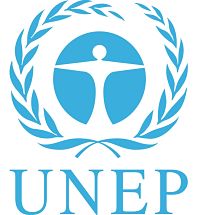Environmental legislation
Where proposed management of an invasive ant incursion is to be undertaken using insecticide, an Environmental Impact Assessment (EIA) or Environmental and Social Impact Assessments (ESIA) may be required to weigh the possible human and environmental consequences of pesticide use against alternative management options and to ensure that every effort has been made to minimise those consequences.
An EIA or ESIA may not be required, but permits or licenses may be required in order to import, store, sell, use or dispose of pesticides. That permitting process may or may not require an EIA (e.g. it may only require some form filling). Development partners who are funding the incursion management may require an EIA regardless of the local country law/ regulations. First check with potential funders and in-country agencies (Departments of Environment and / or Agriculture) to find out the requirements in a given situation.
International obligations
The Governing Council of the United Nations Environment Program (UNEP) is the key global agency governing environmental protection.


A number of international and regional treaties and conventions relate to the environment and environmental protection, including a number that relate specifically to the control of hazardous substances such as pesticides:
- Basel Convention on the trans-boundary movement of hazardous wastes and their disposal
- Rotterdam Convention on the prior informed consent procedure for certain hazardous chemicals and pesticides in international trade
- Stockholm Convention on persistent organic pollutants
- Vienna Convention on protection of the ozone layer
- Montreal Protocol on ozone depleting substances
- London Convention on the prevention of marine pollution by dumping of wastes and other matter
- Intergovernmental Forum on Chemical Safety
- Waigani Convention to ban the importation into forum island countries of hazardous and radioactive wastes and to control the transboundary movement and management of hazardous wastes within the South Pacific region
The World Bank provides policies and guidelines on pesticide use and pest management.
- World Bank Pest Management Policy
- World Bank Environmental and Social Standard 3: Resource Efficiency and Pollution Prevention and Management
- Environmental Assessment Guidelines for World Bank projects requiring pest management (including a pest management plan)
- Environmental Assessment Handbook – Chapter 8 (includes integrated pest management)
SPREP has recently published guidelines to strengthen environmental impact assessment for Pacific Island countries and territories.
National regulations
National laws and regulations manage pesticide importation and use and the associated ESIA procedures. Regulations provide schedules or lists of controlled or prohibited chemicals or substances, and processes for the lawful importation, distribution, sale, use and disposal of hazardous substances. These may be embedded in on or more forms of legislation: Hazardous Substances, Pesticides and Persistent Organic Pollutants, Environmental Protection, Resource Management and / or Biosecurity Acts.
Typically, EIAs/ESIAs for pesticide are required as part of the management process under a country’s Environmental Protection regulations depending on what type and where the pesticide is to be used.
The first place to contact for guidance on the required permits, licenses and EIA processes is the Department of Environment or Environmental Protection Agency of the country / territory.
In most countries / territories, a notice of intent or a permit application form is required by the environmental agency/department with a description of the activity and preliminary assessment of environmental and social impacts. The agency/department will then decide if the risks are significant and an EIA/ESIA is required, or whether a permit or license can be granted based on the preliminary information. This process will also determine what other approvals are required under other regulations or laws (such as pesticide or biosecurity).
For example, in New Zealand many Acts require environmental impact assessments even though they might not be called EIAs. The purpose of the Act will dictate whatever the assessment is intended to deal with. However, the following Acts include some sort of EIA process, although the requirements change regularly. Key environmental impact assessments occur under:
- Biosecurity Act 1993: requires that any proposal for a national or regional pest management strategy must include a statement as to actual or potential effects, beneficial or detrimental, that the implementation of that strategy might have on the environment (s 60(k)(i), s 76(1)(k)(I)
- HSNO Act 1996: Although not actually called an EIA, applications under the Act, to import or release a new organism (s 34) must be accompanied with information on the possible adverse effects of the activity on the environment. For various applications under the Act, the EPA may make “rapid assessment” of the adverse effects of the activity for the purpose of determining the application (see s 28A, 35)
Other New Zealand legislative instruments include the Resource Management Act 1991, the Conservation Act 1987 [s 17S(3) and s 17U(1)(e)], the Antarctica (Environmental Protection) Act 1994, the Crown Pastoral Land Act 1998, the Fisheries Act 1996. More information can be found at legislation.govt.nz.
In the Marshall Islands the key environmental statute is the National Environmental Protection Act 1994, and the most relevant regulation is the Pesticides and Persistent Organic Pollutants Regulations 2004. Approval from the Environmental Protection Agency is required to import, distribute, store, sell, or use pesticides under the regulation. The Solid Waste Regulations 1989 regulates the disposal of pesticides. An EIA may be required for pest management, and would be determined after a preliminary environmental assessment application is made to the Environmental Protection Agency. [PRF1]
In Kiribati the use of pesticides requires an environment licence/permit under the Kiribati Environment Act, which requires environmental impact assessment.
The above are given as examples of a range of different approaches. The Pacific Islands Legal Information Institute provides comprehensive information on legislation for Pacific nations.
Information sources
Many thanks to Pene Ferguson, Souad Boudjelas, Liliy Reue and Evan Brenton-Rule for providing links to this information.
Pacific Islands Legal Information Institute
SPREP. 2016. Strengthening environmental impact assessment: guidelines for Pacific Island countries and territories. Apia, Samoa
content reviewed by Pene Ferguson, Environmental Safeguards Specialist at World Bank, November 2017 and Souad Boudjelas, Pacific Invasives Initiative, November 2016
